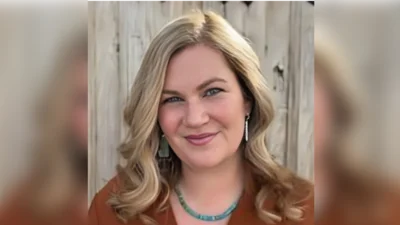One person has a stroke in the United States every 40 seconds, according to the Stroke Awareness Foundation. "One person in the United States dies from stroke every three minutes," said Tarun Girotra, MD.
Girotra is one of multiple stroke neurologists at The University of New Mexico Hospital’s award-winning Stroke Center. Always prepared to deliver advanced stroke care in New Mexico, the center operates 24 hours a day, seven days a week and treats close to 800 stroke and suspected stroke patients annually.
"Whenever a patient comes to UNM Hospital, they will be seen by a team of multidisciplinary providers, nurses and techs, and we have round-the-clock neurologists, neurosurgeons, radiologists and emergency medicine with a common focus or common goal of delivering the fastest, most accurate care to all of our stroke patients," Girotra said.
"We see this very commonly, and it is actually the most common cause of serious long-term disability," Girotra added. May is Stroke Awareness Month, but it is always important to understand this life-threatening neurological emergency.
There are two types of strokes: ischemic and hemorrhagic. Ischemic strokes are more common, affecting 85% of patients. These occur when a clot gets stuck in one of the brain arteries, preventing blood flow to that part of the brain. Hemorrhagic strokes make up 15% of cases and happen when a blood artery ruptures, leading to bleeding in the brain tissue.
"Both can be life-threatening and deadly and can significantly impact a person's ability to do their day-to-day activities," Girotra said. "We treat both with the same amount of importance, but they are different diseases with different lines of treatment."
The acronym BE FAST helps remember signs and symptoms for identifying potential strokes:
- Balance: Sudden loss of balance or dizziness
- Eyes: Blurred or double vision
- Face: One side drooping
- Arm: Inability to hold an arm straight
- Speech: Slurred speech
- Time: Note symptom onset time and call 911 immediately
Treatment within four hours of symptom onset is crucial for ischemic strokes. "If a person does not recognize their stroke symptoms on time and they get to the emergency room after four-and-a-half hours, they are not eligible for clot-dissolving medicines," Girotra said.
First responders play a critical role by quickly identifying stroke types and relaying information so hospital teams can prepare while patients are en route.
UNM Hospital’s Stroke Center receives 10 to 12 stroke patients daily. "This number has been steadily growing every year because of investment into the Stroke Program and increased awareness about stroke symptoms," Girotra noted.
Patients arriving by ambulance are met immediately by the hospital's stroke team without waiting in the emergency room. Depending on the type of stroke, treatment options include clot-dissolving medication Tenecteplase (TNK) or surgical clot removal using catheter wires.
"We have seen significant improvement in outcomes where people come in completely paralyzed on one side and walk out a day or two later because of this procedure," Girotra said. Patients who respond well can be discharged within 48 to 72 hours but may require further rehabilitation.
Stroke prevention involves managing risk factors such as smoking cessation, controlling diabetes, maintaining physical activity, reducing alcohol consumption, adhering to healthy diets, and monitoring conditions like high blood pressure or cholesterol levels.
But if a stroke occurs, UNM Hospital Stroke Center remains ready. "Whenever a patient comes to UNM Hospital... we have round-the-clock neurologists... delivering fast and accurate care," reiterated Girotra.
For more information about UNM Hospital Stroke Center's services including prevention tips, click here.
___









